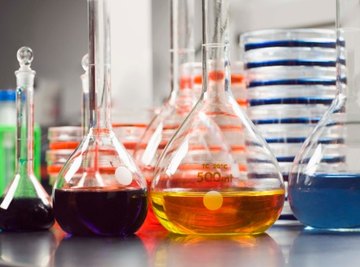
Remember the story of Goldilocks and the three bears? When Goldilocks goes into the bears' house, she tries the porridge and finds that the first is too hot, and the second is too cold. When she tries the third one, she finds a porridge that is just right. In the same way Goldilocks wanted porridge that was perfect to eat, organisms want an environment that is just right. But what is just right for an organism?
Physiological pH
Human blood is slightly basic with a pH of around 7.4. As soon as the blood pH drops below 7.35, a person is considered to be in physiological acidosis (which is bad). As soon a the pH drops below 7.0, it can become fatal.
So how does the body maintain the correct pH throughout the day no matter what the situation is? It makes use of a biological buffering system.
What Are Biological Buffers?
A biological buffer is an organic substance that has a neutralizing effect on hydrogen ions. In this way, a biological buffer helps maintain the body at the correct pH so that biochemical processes continue to run optimally.
Most buffers consist of a weak acid and a weak base. They help maintain a given pH even after the addition of an acid or a base. For example, blood contains a carbonic acid (H2CO3)-bicarbonate (HCO3-) buffer system. In this system, the weak acid dissociates to a small extent, giving bicarbonate ions. These ions are capable of binding extra H+ions floating around in the blood. This reforms the weak acid and reduces the amount of H+ ions in solution.
When might this happen? Well, exercising increases the amount of hydrogen ions floating around in your blood. When this occurs, the carbonic acid-bicarbonate buffering system comes into play. By capturing the excess hydrogen ions the pH of your blood does not become too acidic.
Why Do Buffers Matter?
Cells function in a narrow range of pH. So do the many enzymes that help you digest food, make energy and relay signals between nerve cells. As such, it is vital that the pH in the body and in these cells does not vary drastically. Otherwise, they'll stop doing the work you need them to do. To make sure that this does not happen, buffers are found in all biologically relevant solutions.
Biological buffers can also be buffer systems that help maintain a steady pH around the physiological pH. When conducting experiments with individual components of cells or individual proteins, scientists must take into account the buffer they use. Without a good buffer, the activity of the component they want to study may decrease.
For example, if a scientist is working with a protein that functions in the brain at a pH of 7.4, but the scientist uses a buffer of pH 8.0, then the protein will not function optimally. Instead the scientist should switch to a buffer closer to the pH that the protein actually functions in. This way the scientist can observe the protein functioning in an environment similar to its natural environment.
What Are Examples of Biological Buffers?
There are many different biological buffers manufactured and sold for the express purpose of maintaining physiological pH. This is very important for a scientist working with biologically relevant materials. These buffers do well to maintain a steady pH near 7.4. A very commonly used biological buffer is called HEPES (4-(2-hydroxyethyl)-1-piperazineethanesulfonic acid). This buffer is very good at maintaining a steady pH between 6.8 and 8.2.
Buffers should be chosen based on knowledge of the pH that you want to work at and the range over which you need to have a steady pH.
References
About the Author
Riti Gupta holds a Honors Bachelors degree in Biochemistry from the University of Oregon and a PhD in biology from Johns Hopkins University. She has an interest in astrobiology and manned spaceflight. She has over 10 years of biology research experience in academia. She currently teaches classes in biochemistry, biology, biophysics, astrobiology, as well as high school AP Biology and Chemistry test prep.
Photo Credits
Jupiterimages/Comstock/Getty Images
